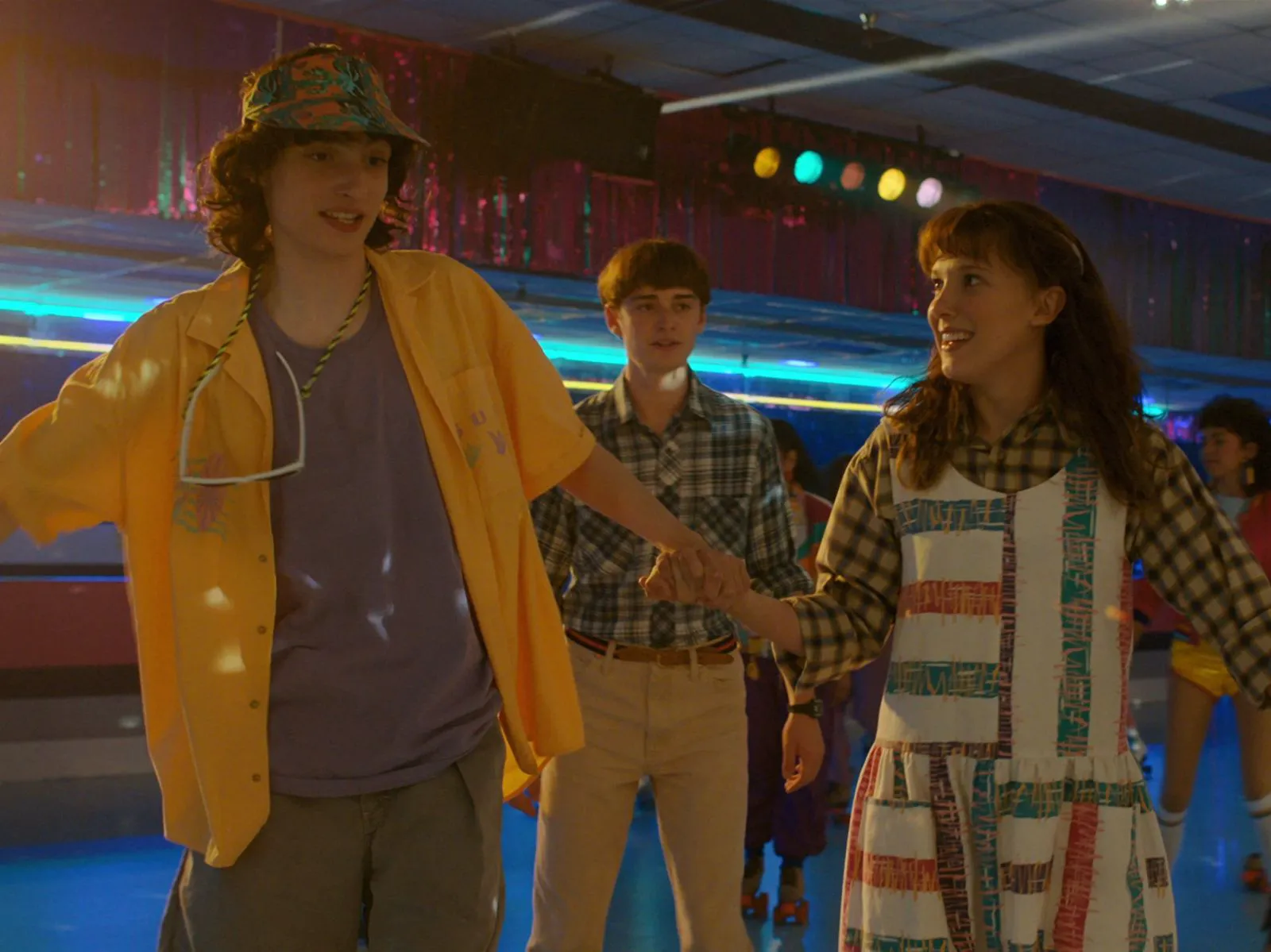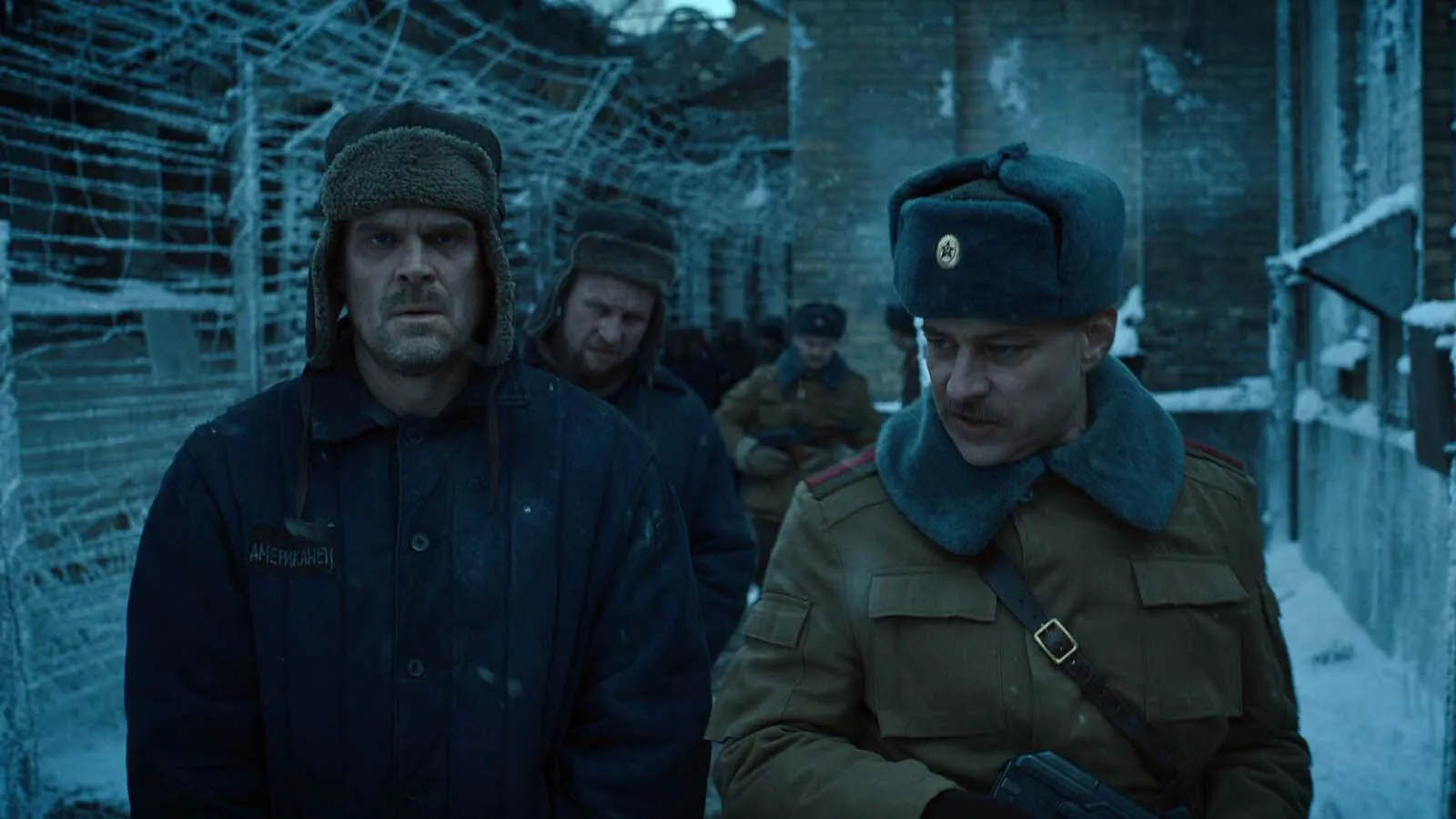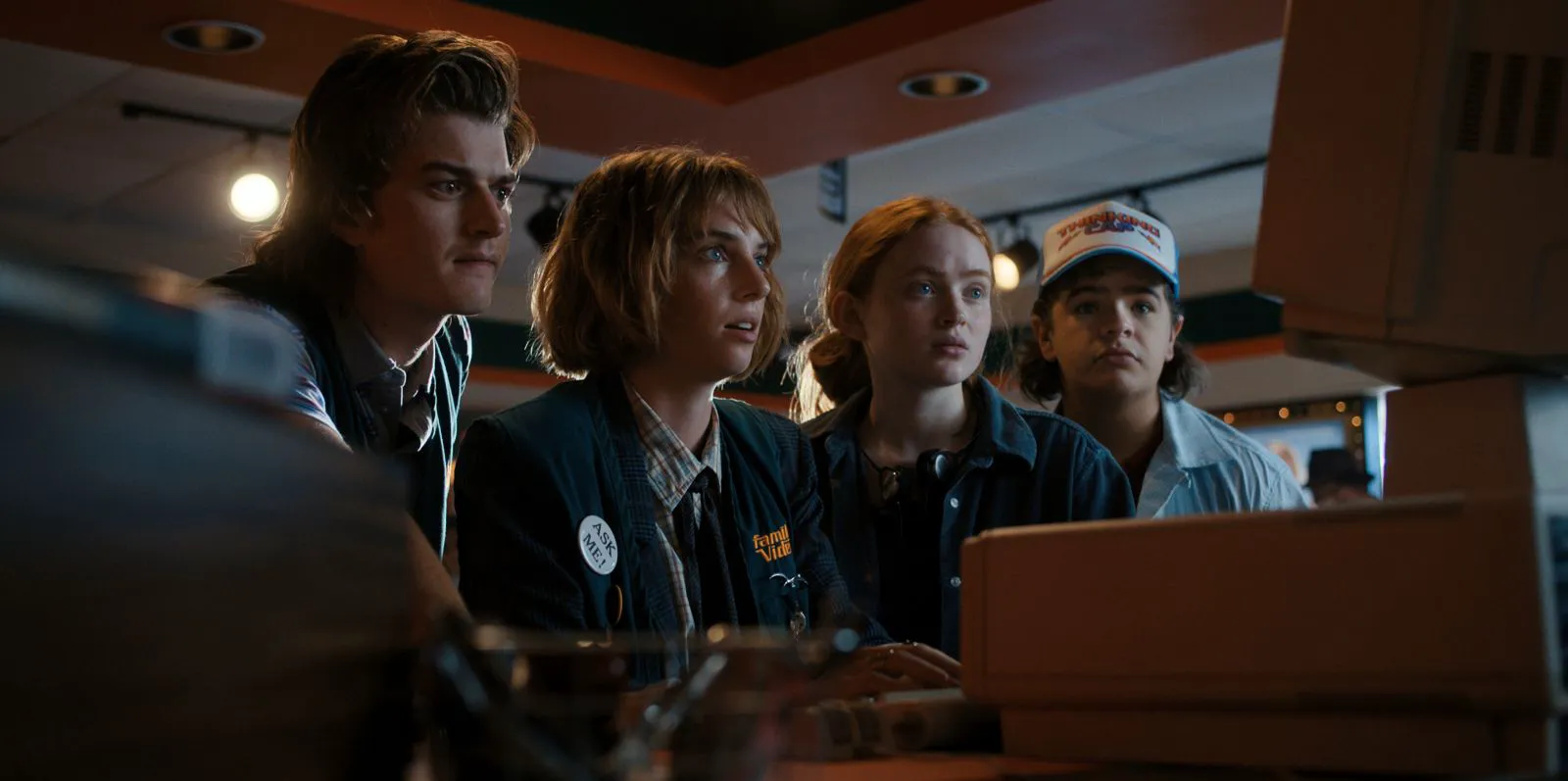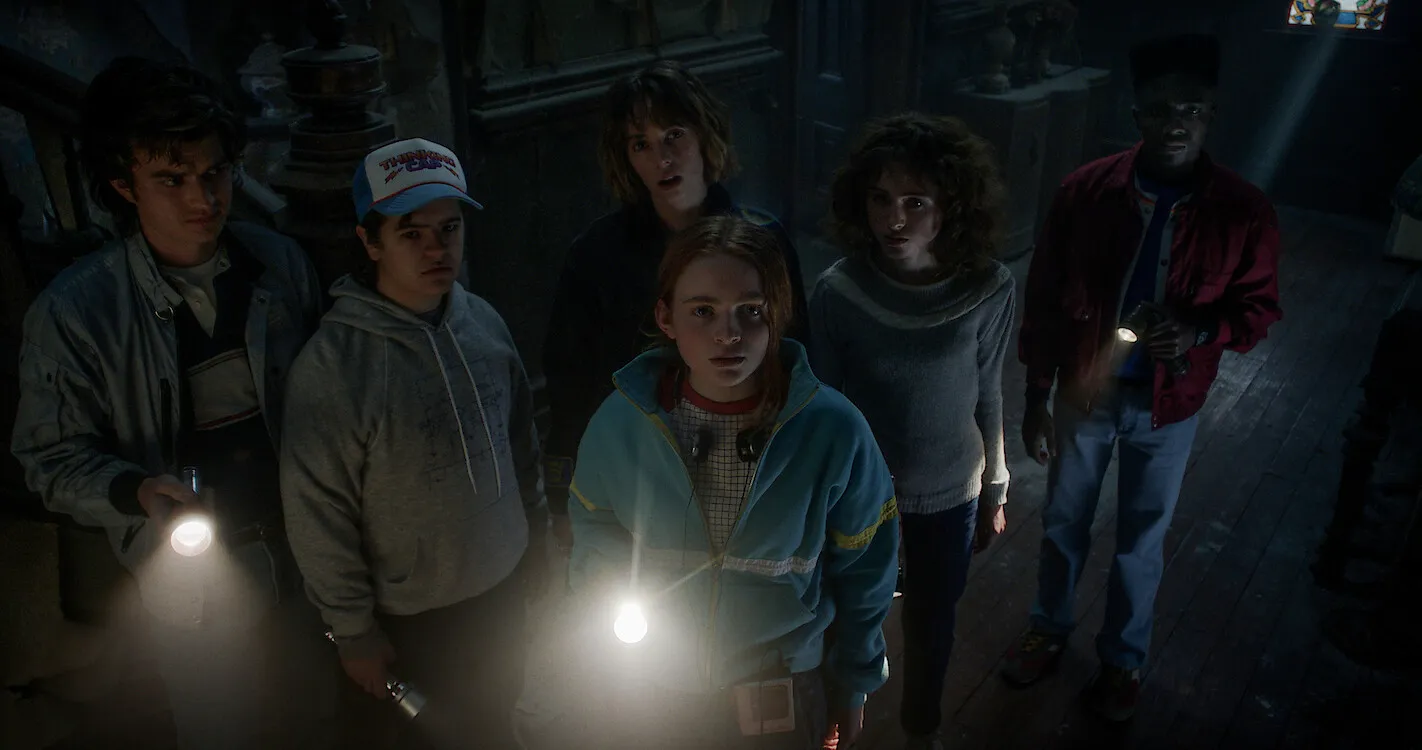Diving Back into the Upside Down: A Look at Stranger Things Season 4
The fourth season of “Stranger Things” is a rare case where you’re tempted to skip to the end, but you just can’t. Netflix’s once-flagship show has returned after three years of filming, delays, COVID restrictions, and other mishaps, but not in its entirety. Seven episodes were released on May 27th (the last of which clocks in at over an hour and a half), and the streaming service will drop the massive (undoubtedly) finale on July 1st. We have almost a month of speculation, buzz-worthy promos, Reddit theories, and YouTube breakdowns ahead of us. For now, all I can say is that after watching, you’ll only want one thing: to rewind and start over, to prolong the feeling of an endless adventure, even if just for a little while. That short recommendation might be enough for those who have been waiting and believing, but let’s be honest: the die-hard fans have already devoured the new episodes. For everyone else, let’s try to explain how “Stranger Things” has become great again.

Millie Bobby Brown as Eleven
A Tale of Four Cities
The plot of the seven episodes is divided into four parts, almost equally. Somewhere in Kamchatka, Sheriff Hopper (David Harbour) is swinging a sledgehammer on the railroad tracks and sending packages to Joyce (Winona Ryder) in California. Mrs. Byers, along with Will, Jonathan, and Eleven (Noah Schnapp, Charlie Heaton, and Millie Bobby Brown), are settling in on the West Coast: the boys are doing well, but the superhero without superpowers is struggling to adapt to school and waiting for Mike (Finn Wolfhard) to visit for spring break. Everything goes haywire: Joyce, along with the quirky Murray Bauman (Brett Gelman), flies off to rescue Jim from prison and fight the Russians. Scientists (not just Dr. Owens anymore) are hiding Eleven from hostile military forces in a lab, where she’s trying to regain her abilities and recall a defining episode from her childhood. Mike, Will, Jonathan, and his new friend Argyle (Eduardo Franco) set off in a pizza delivery van to follow Eleven.
Back in Hawkins…
And what about Hawkins? As always, very strange things are happening there. Teenagers are dying one after another, levitating towards the ceiling and writhing in pain. The number of victims is growing, the police can’t find a motive, and they choose a convenient suspect: Eddie Munson (another newcomer, Joseph Quinn), the eccentric leader of the familiar “Dungeons & Dragons” game, who just happened to be in the wrong place at the wrong time. Dustin, Lucas, Max, Erica (Gaten Matarazzo, Caleb McLaughlin, Sadie Sink, and Priah Ferguson), and Nancy, Robin, and Steve (Natalia Dyer, Maya Hawke, and Joe Keery) are trying to “get acquainted” with the sinister guest from the Upside Down, responsible for the merciless deaths. This storyline seems to be the main one, at least because all roads lead to Hawkins, and sooner or later, the others will also find themselves in the town gripped by satanic panic due to the series of murders.

David Harbour as Jim Hopper
A Masterclass in Parallel Storytelling
Recounting the plot twists in text is the most laborious and thankless task: it is precisely because of the complexity of the “Stranger Things” return that it is criticized. Perhaps the constant jumping can indeed seem tiring (especially for binge-watching enthusiasts), but it’s worth admitting that the composition turned out to be the best possible. First of all, all the significant characters simply wouldn’t fit in one frame, as they did at the end of the second season – there are too many of them now. Secondly, “Stranger Things” demonstrates insane editing choreography: the entire runtime is built on parallels. If it’s possible to come up with each line autonomously in the script, then masterfully merging a massive array of episodes into a four-headed monster in post-production is a true art of rhythm.

Maya Hawke as Robin
Embracing the Horror
The Duffer brothers’ main support has always been genre, but now the escapades of adventure and science fiction flashes are tightly embraced by 80s slashers with a precise address: Elm Street. It’s not just about Robert Englund – the actor played a cameo, but a key role in the season – but about that very visitor from the Upside Down, Vecna. The spider-like tormentor got his name after another villain from the board game, but he learned his nightmares from the best: Vecna penetrates the minds of teenagers and dispenses twisted justice with a palm crowned with blades, as Freddy Krueger did, and chooses his target like Pennywise from Stephen King. Children – today and always victims of adult vices: the killer seeks mentally vulnerable, traumatized teenagers who are suffocated by guilt. Needless to say, among our old acquaintances, there are those who are at risk?

Sadie Sink as Max
Identity and Choice
It would be superfluous to start a new round of plot retelling, but one way or another, the authors came up with their own arc for each of the wards – all the transformations concern the definition of identity, whether it’s the desire to be popular or, conversely, the desire to distance oneself from the crowd, the painful experience of bullying and loss, the attempt to understand one’s own feelings or sexual orientation, the eternal escape or the same eternal heroism against common sense. Here comes another opportunity to scold the series for simple truths: the pendulum has only two trajectories, and “Stranger Things” has reached the fundamental orbit of choice, through which the Jedi, the wizards in Hogwarts, and the entire pantheon of pop-cultural idols passed.
But it is the simple-hearted genre didactics that today looks like the most desirable comfort zone: there is good and there is evil, but people are just people, and therefore can make mistakes. It is not Americans fighting with Russians, but small people fighting with a large system: the torture of military personnel is equally cruel at any latitude, and the destructive consequences of military actions echo through both the 50s and the 80s. You can fall out of love and then fall in love again, or you can get scared and not confess. It’s easy to hate yourself, but it’s even easier to be ready for anything for the sake of your loved ones. And in this whirlwind of brief moments of doubt between black and white, right and wrong, “Stranger Things” derives the basic formula of our media consciousness. Even in the most terrible moments, when there is nothing to breathe and the Upside Down squeezes around the throat with an iron grip, it is pop culture that becomes a saving link and a beacon of calm. Whether it’s the best song by Kate Bush, a strange magazine about UFOs and Yeti, a board game, or new episodes of your favorite series, mass culture saves our souls.